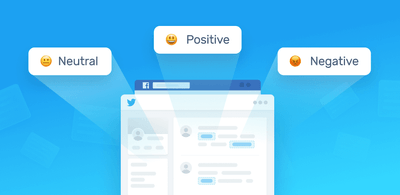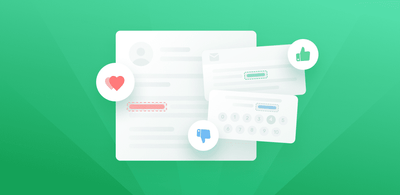How to Use Sentiment Analysis in Marketing

Sentiment analysis can do wonders for any marketer. By understanding what your target audience is thinking on a scale that only sentiment analysis can achieve, you can tweak a product, campaign, and more, to meet their needs and let your customers know you’re listening
Sentiment analysis is an artificial intelligence technique that uses machine learning and natural language processing (NLP) to analyze text for polarity of opinion (positive to negative). It’s one of the hardest tasks of natural language processing but, with the right tools, you can gain in-depth insights from social media conversations, online reviews, emails, customer service tickets, and more.
Here’s an example of how a pre-trained sentiment analyzer might sort online mentions about a particular marketing campaign:
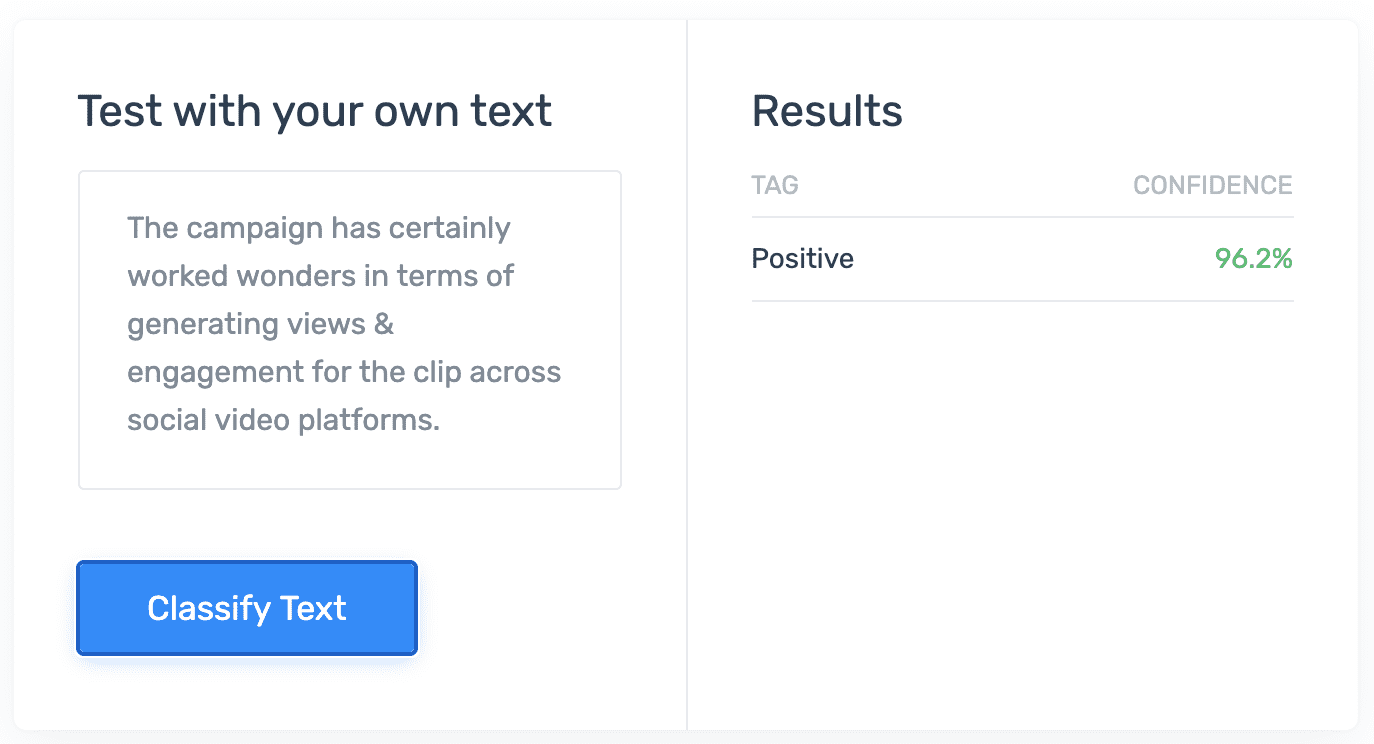
The model easily categorizes this comment as ‘Positive’ with near 100% accuracy. But, with powerful machine learning algorithms and models custom-trained to your specific needs and criteria, sentiment analysis can go far beyond simply positive, negative, and neutral, to read for context, misspelled and misused words, slang, even sarcasm.
Sentiment analysis has become an essential tool for marketing campaigns because you’re able to automatically analyze data on a scale far beyond what manual human analysis could do, with unsurpassed accuracy, and in real time. It allows you to get into the minds of your customers and the public at large to make data-driven decisions.
You can even analyze customer sentiment of your company and compare it against your competition, or follow market trends and emerging topics. Check out your brand perception in new potential markets. The public offers millions of opinions about brands and products on a daily basis, on social media and beyond.
Traditional metrics, like views, clicks, comments, and shares just aren’t enough anymore – they don’t tell the whole story. Some of those reactions could actually be negative.
You need to know exactly what they are saying, then you can figure out why. And machine learning allows you to perform it automatically and on a regular basis, with almost no human interaction needed. With constant, real-time sentiment analysis, you’ll always be prepared to make quick decisions and pivot when necessary.
Sentiment Analysis Marketing Applications
Below are some of the top applications to help increase customer acquisition, improve customer service, and keep your clientele happy:
- Social media monitoring
- Analyze marketing campaign success
- Gauge consumer sentiment around a new product launch
- Keep an eye on your competition
- Prevent PR crises
- Market research
- Identify influencers
Social media monitoring
Social media monitoring, or social listening, can often uncover the truest customer opinions because users feel freest to react quickly and emotionally to what they see and hear. They are simply compelled to tell the world how they feel.
Furthermore, it’s estimated that 83% of users who make a comment or complaint on social media expect a response the same day and 18% want it immediately. Imagine all the customers you could lose if you’re not paying attention to social media mentions, minute-to-minute.
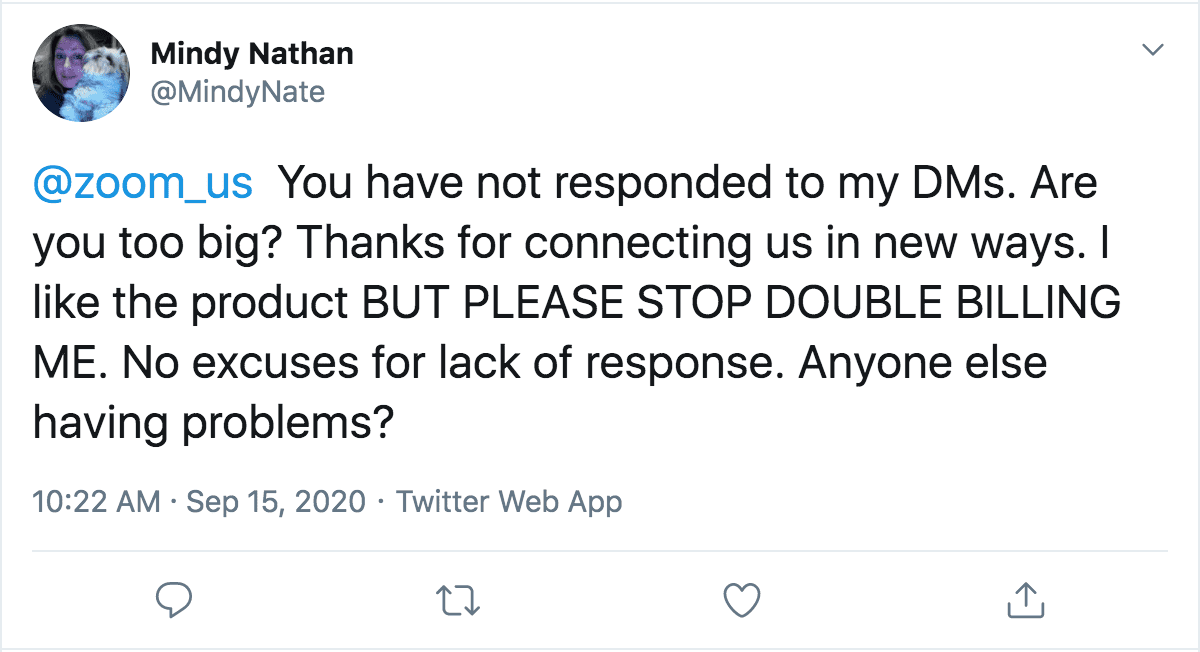
Oftentimes, the best course of action can be to simply show your customers that you’re listening. Or use a positive comment to your benefit, for the world to see:
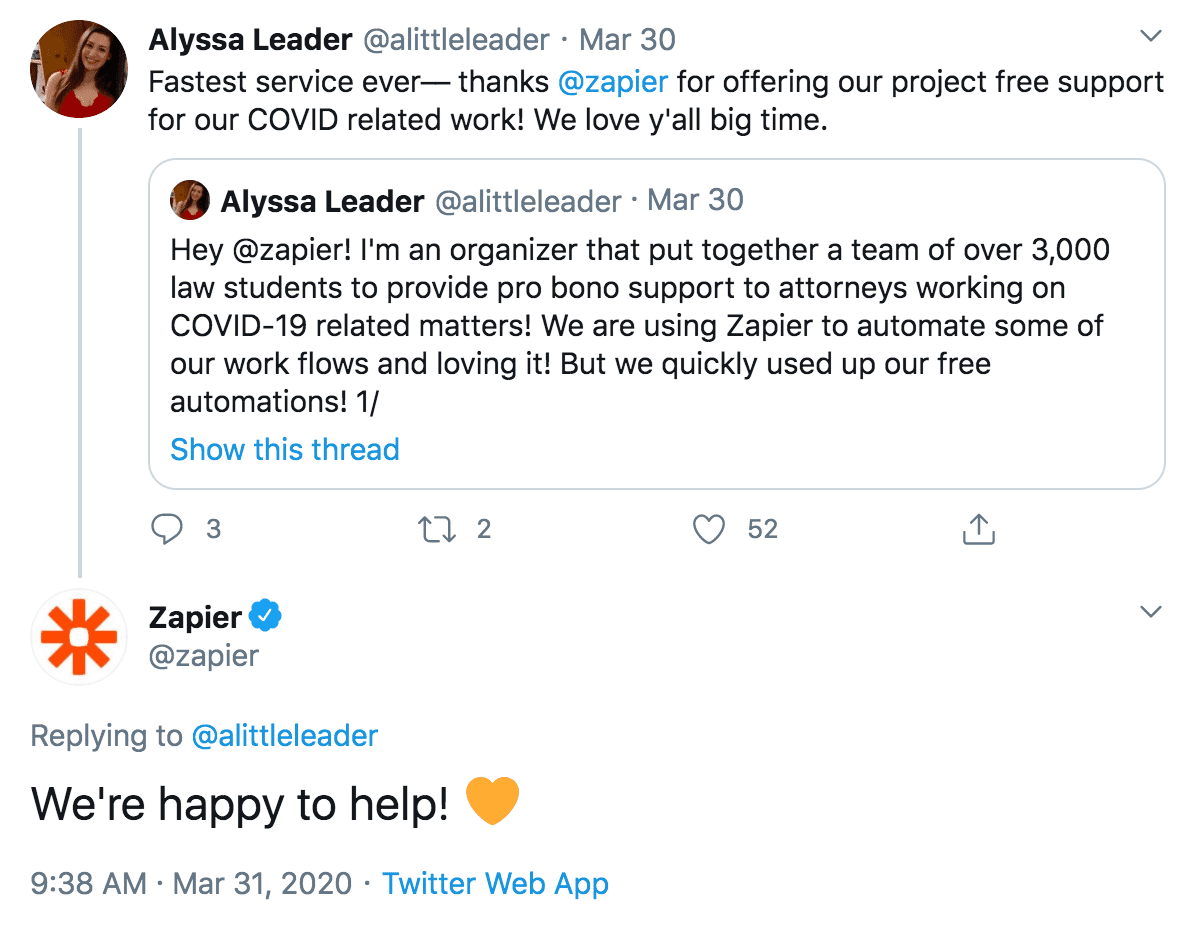
Sentiment analysis of social data will keep an eye on customer opinion, 24/7. Use it to target marketing campaigns directly and follow the response, or use it as a marketing device, itself, to find out what language and what social interactions receive the most positive feedback.
Analyze marketing campaign success
Follow your marketing campaigns right as they launch, in real time, on social media or in news articles, forums, or targeted surveys. Track the sentiment of your customers to find out what’s resonating and what’s not, on a macro level or down to individual word usage.
Watch your campaigns as they rise or fall, and find out why it may be happening. If your campaigns are working better within certain demographics or geographic regions, you can tweak or automate your marketing to target them more thoroughly. And you can compare a current campaign against historical data to make sure you’re always improving your messaging.
Gauge consumer sentiment around a new product launch
Similarly, you can track sentiment of new product launches, from wherever the comments and reviews may appear.
Use aspect-based sentiment analysis to organize individual ideas or “opinion units” about your product by “aspect” or category, like Reliability, Usability, Pricing, then perform sentiment analysis. This will give you a sentiment rating of the major aspects of your new product, so you can see how customers feel and where you might need to make changes.
Sentiment analysis also allows you to get proactive with your message to reach out to customers directly when they may have an issue.
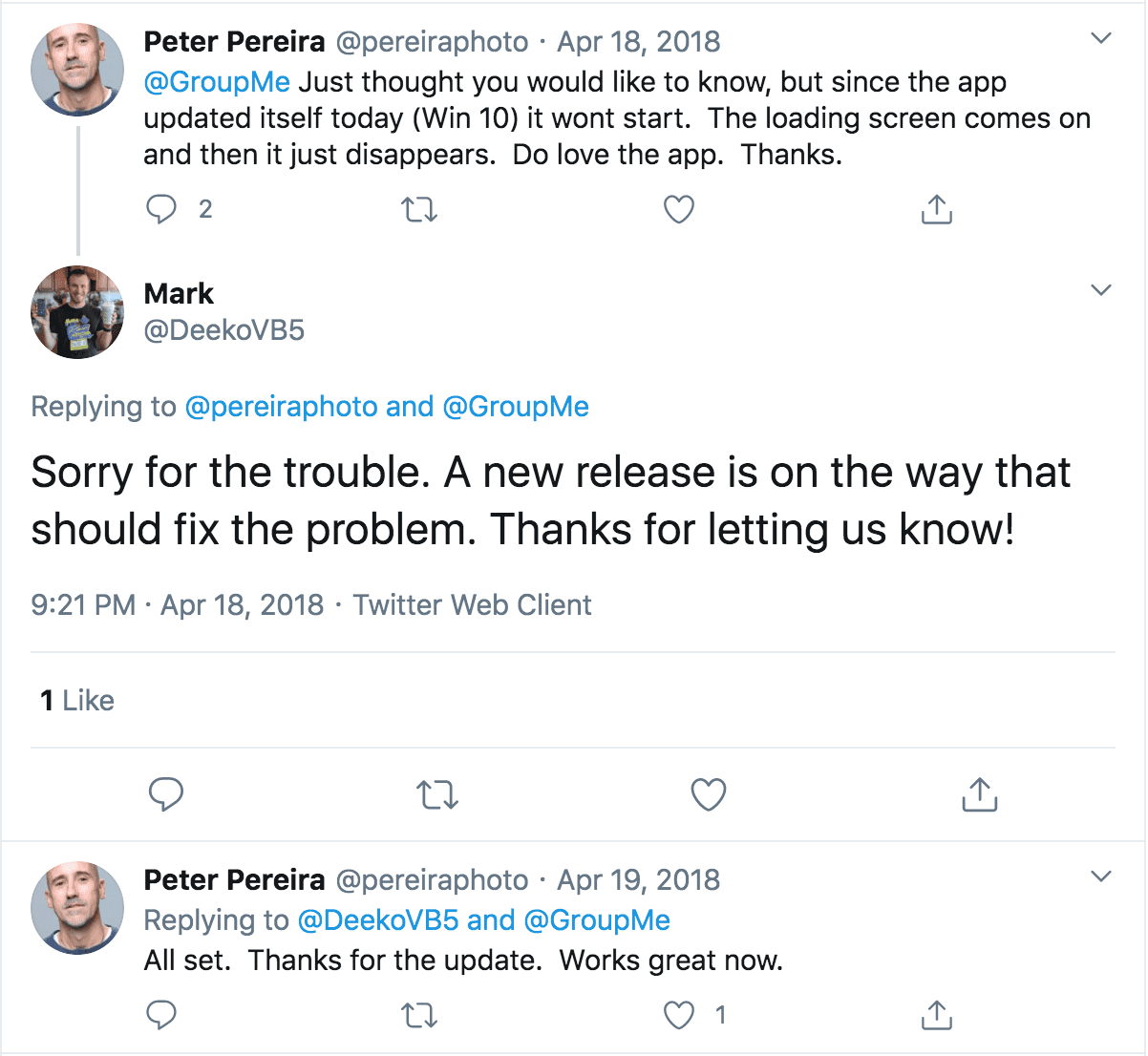
Keep an eye on your competition
Monitor more than just your own brand and products and keep an eye on your competition. Find out where their marketing campaigns may be succeeding with customers and what keywords and tactics work best. Are they marketing to particular groups or on certain media that you may not have thought of?
Furthermore, when you see that their campaigns are scoring negatively, you can take advantage of the situation to shine a light on your brand. Or, if a certain aspect of a competitor’s new product receives a large number of negative reactions, you can use it as an opportunity to improve on it with your own release.
Prevent PR crises
Tweets and Facebook comments can travel around the world in just a few minutes. This is when it’s particularly useful to monitor your brand and marketing efforts on social media in real time. If negative sentiment suddenly spikes, you can tackle the problem right away, before it grows into a serious issue. Filter your social listening by sentiment and aspect to always be at the ready.
Market research
Find new markets and new demographics where your brand is likely to succeed. Analyze successful campaigns and brands to discover what messaging works best. Target market surveys can be particularly helpful in this situation, and sentiment analysis allows you to analyze open-ended surveys – to dig into quantitative data and find out the emotions and opinions of respondents. You can analyze thousands of text-heavy surveys and reviews in just minutes.
Identify Influencers
Although sometimes seemingly overused, social media influencers are here to stay in the years to come. And they can provide real results – oftentimes micro-influencers have even more sway over their followers, and they cost quite a bit less.
With the help of sentiment analysis, it can be easy to locate the most appropriate influencers for your product. Simply identify keywords that are important to your business. If you’re a vegan-friendly snack food company, for example, you could search social media for keywords, like “vegan,” “plant-based,” etc.
Once you’ve located users with the appropriate number of followers that use your keywords frequently (in a positive light, of course), use sentiment analysis again to make sure their interactions with followers are also positive, and you’ve found your candidates.
Sentiment Analysis Marketing Tools
There are several useful and dynamic sentiment analysis tools out there that can make sentiment marketing easy and cost-effective.
MonkeyLearn
Best for: Companies that want an all-in-one interface, with easily customizable tools and simple integrations.
MonkeyLearn is a powerful SaaS platform that allows you to train your own sentiment analyzers with ease, and offers many other user-friendly, customizable text analysis tools, like the keyword extractor, survey feedback classifier, and intent and email classifier.
MonkeyLearn has simple integrations with other applications you already use, like Excel, Google Sheets, Zendesk, Zapier, and more. You can even upload Twitter data directly in the app or use low-code APIs to connect all other social media platforms (like the Graph API for pulling data from Facebook).
Best of all, with MonkeyLearn Studio, you can perform all your analyses and see them immediately visualized in striking charts and graphs in one simple interface.
Brandwatch
Best for: Companies that want access to huge data backlogs.
Brandwatch’s Consumer Research platform boasts “the industry’s largest archive of consumer opinions” offering data from 100 million sources and 1.3 trillion individual posts. They focus on social listening and social influencer strategies to get a thorough picture of sentiment marketing and brand strategy.
Meltwater
Best for: Companies that want a marketing and PR partner.
Meltwater offers social listening and social media solutions with guided management for clients that don’t want to oversee analysis themselves. Meltwater began as a web scouring company in 2001, an early entrant into the online media monitoring landscape.
While they have extended their services into brand management, PR, and crisis communications, they are still one of the best in the business with huge news and social media databases that can help guide marketing campaigns with the aid of history.
Social Searcher
Best for: Companies that want to take social listening and brand monitoring out for a test drive.
Social Searcher is a free social media search engine that offers real-time access to follow brands and products across all major social media. It’s perfect if you’re just learning about social media monitoring, because it’s easy to use and offers a number of more advanced options, like sentiment analysis, and beyond.
It doesn’t integrate as easily with other applications, however, so the analysis can be a little clunky if you want to get highly advanced.
Repustate
Best for: Companies with some coding ability to access APIs and train advanced analysis models.
Repustate’s main focus is on training sentiment analysis models to industry-specific language for advanced data mining, and their algorithms use a number of different techniques for comprehensive results.
They offer multilingual analysis, with access to news outlets and social media from around the globe, which is particularly helpful if you do business in multiple countries or are looking to expand into new markets.
Hootsuite
Best for: Companies that want to track real-time conversations happening across multiple social media platforms.
Hootsuite integrates easily with all major social networks: Twitter, Instagram, Facebook, LinkedIn, WordPress, Foursquare, and Google+, and more. Set up unlimited social streams and assign actions and responses simply to coworkers for immediate execution.
Filter marketing and brand mentions by location, language, tone, gender, and more. And set up immediate notifications when influencers make a negative comment directed at your brand or product.
Conclusion
Whether you want to use sentiment analysis to gauge the success of your marketing campaigns, as a targeted marketing tool, or to pit your brand against your competition, there’s no doubt that it has become a necessary tool for any marketing strategy.
Try out MonkeyLearn’s pre-trained sentiment analyzer now to see how it works. Once you’ve integrated sentiment analysis into your marketing efforts, you’ll be amazed at how easy it is to use and how quickly you’ll get real results.
Request a demo to find out more.

Rachel Wolff
September 21st, 2020




